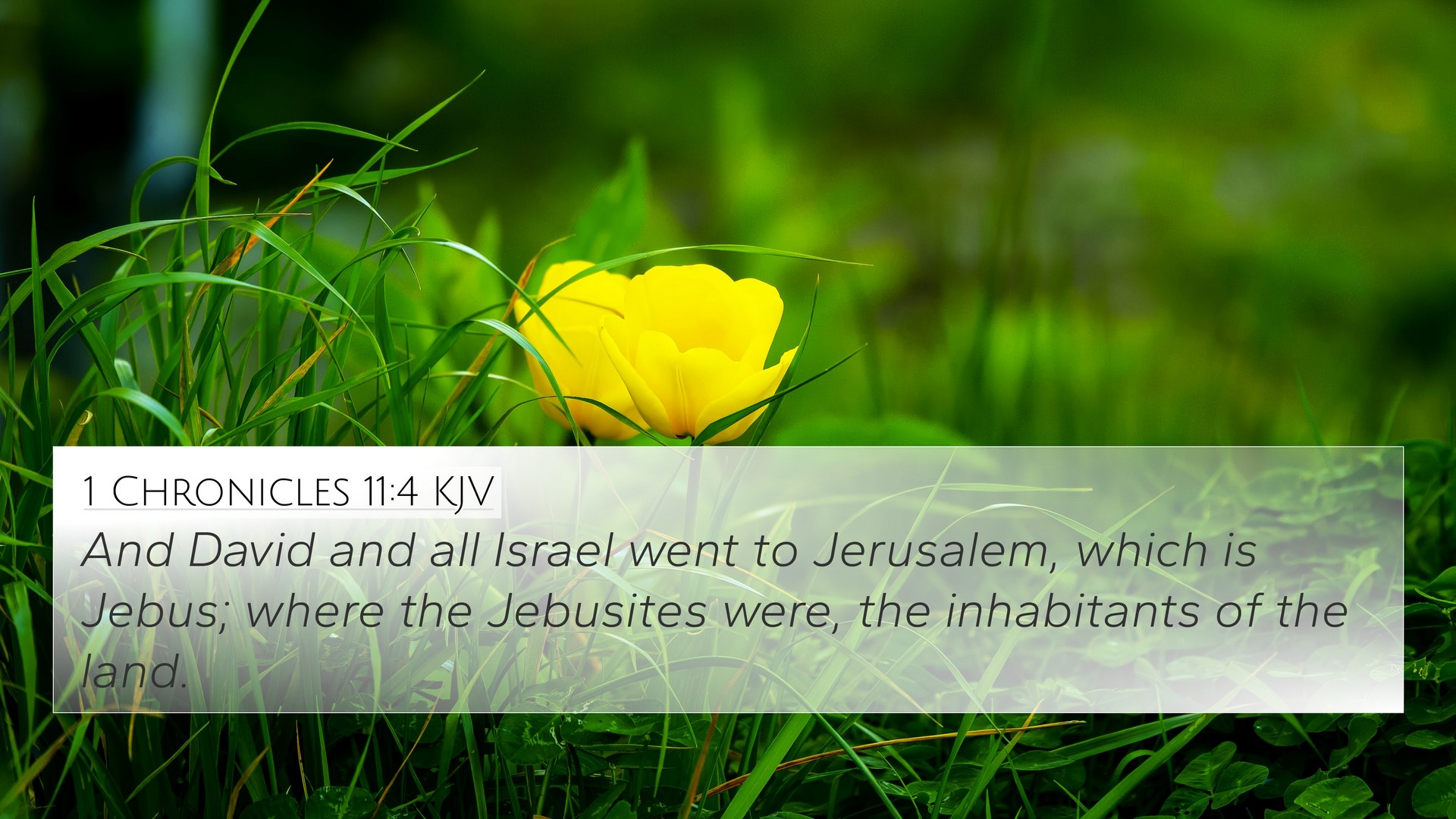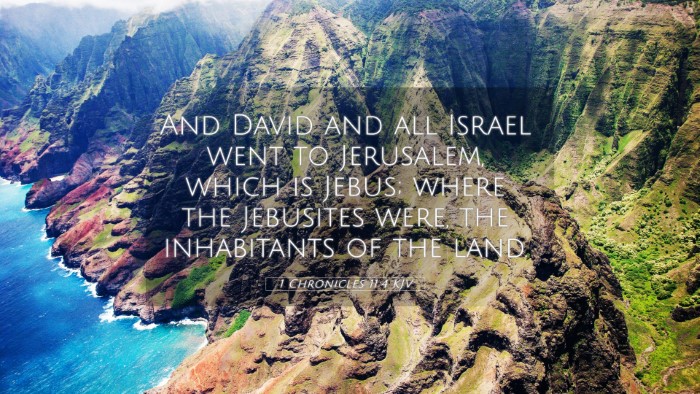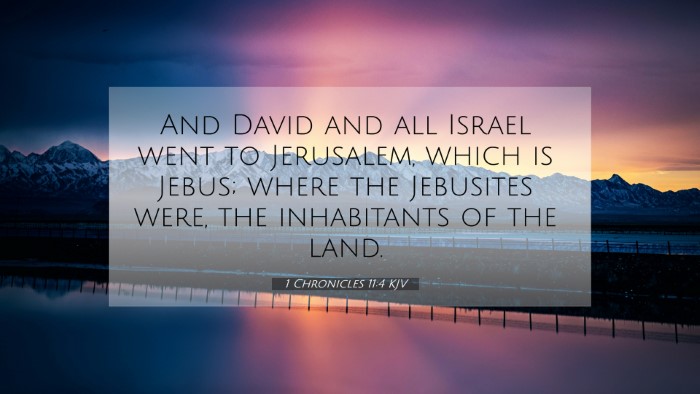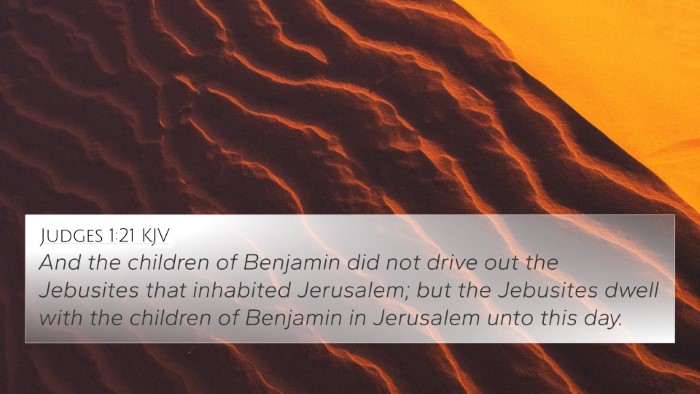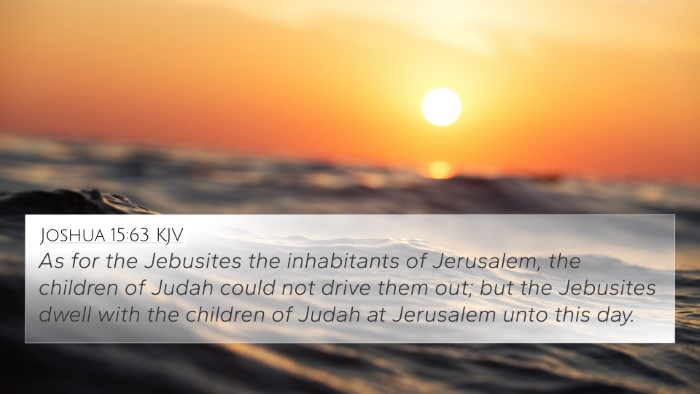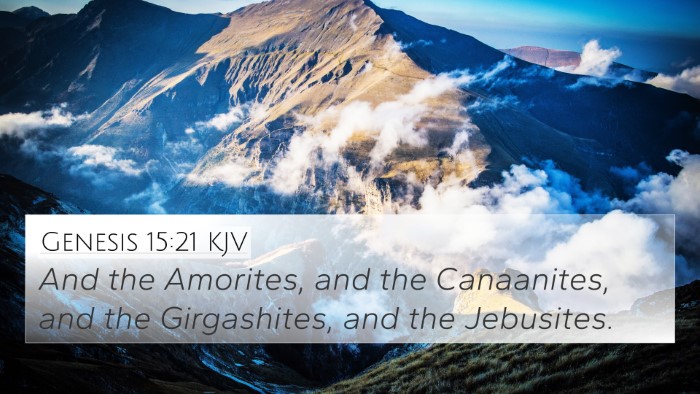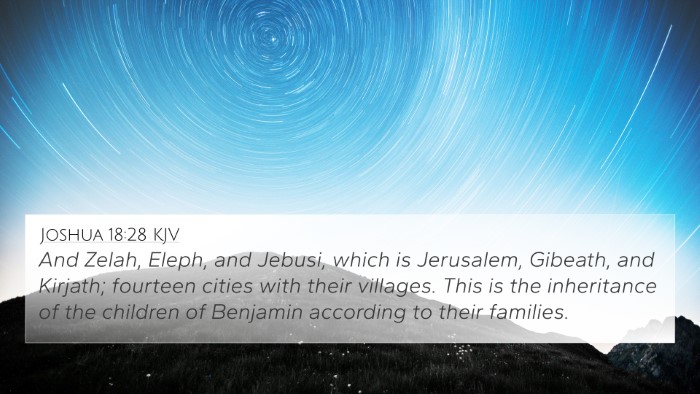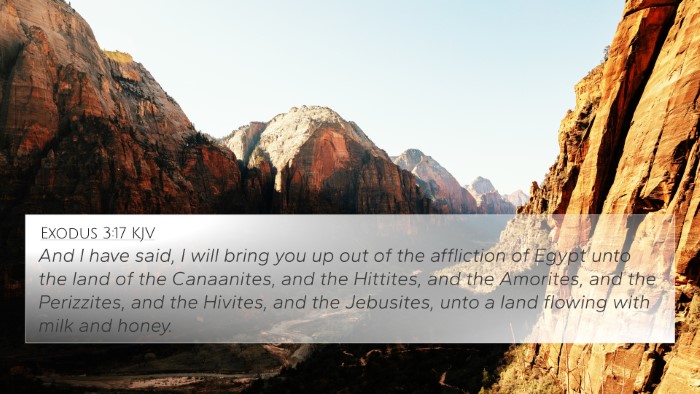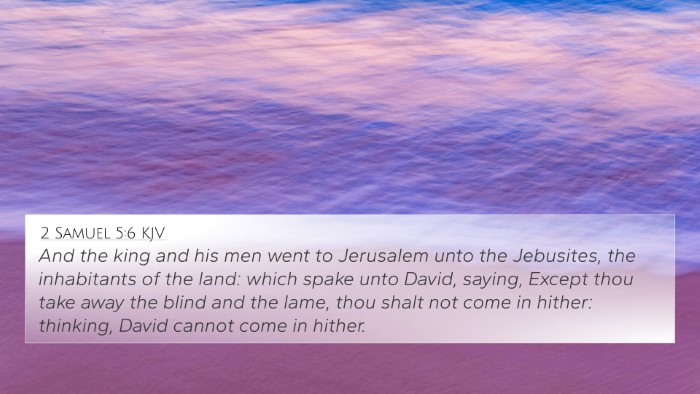Understanding 1 Chronicles 11:4
1 Chronicles 11:4 states: "And David and all Israel went to Jerusalem, which is Jebus: where the Jebusites were, the inhabitants of the land."
Verse Context and Background
This verse occurs in the context of David's rise to power as king over Israel. After having previously ruled in Hebron, David establishes Jerusalem as the capital of his kingdom. The city was initially inhabited by the Jebusites, a Canaanite tribe.
Commentary Insights
Various commentators provide insight into the significance of this passage:
- Matthew Henry: Highlights the strategic choice of Jerusalem as a stronghold and emphasizes the divine favor in David's selection of a place to unite the nation. He notes that Jerusalem’s elevation and geographic position made it an ideal capital.
- Albert Barnes: Points out the importance of Jerusalem as a religious and political center. He emphasizes that this episode illustrates the transition from tribal leadership to a centralized monarchy under David.
- Adam Clarke: Discusses the historical context of the Jebusites and the significance of their displacement. He notes how this act symbolizes a fulfillment of God’s promise to give the land to Israel.
Symbolism and Thematic Connections
The move to Jerusalem symbolizes:
- The unification of Israel under one king.
- The establishment of a divine capital, foreshadowing the future significance of the city in Biblical history.
- A literal and spiritual conquest that sets the stage for the construction of the temple.
Bible Verse Cross-References
1 Chronicles 11:4 can be cross-referenced with the following verses to understand its broader implications:
- 2 Samuel 5:6-10: Details David capturing Jerusalem from the Jebusites and emphasizes his growing power.
- Psalms 122:1-2: Reflects the joy and esteem of going to the house of the Lord, linking Jerusalem with worship.
- Genesis 10:15-16: Offers a glimpse into the history of the Jebusites as descendants of Canaan.
- Isaiah 2:3: Prophecies about Jerusalem as a place of teaching and guidance for all nations.
- Hebrews 7:14: Draws a connection between Jesus and the city of David, emphasizing its ongoing importance in salvation history.
- Matthew 5:35: Highlights the significance of Jerusalem as the city of the great King, aligning with its historical importance.
- Revelation 21:2: Where the new Jerusalem is described as a holy city, indicating Jerusalem’s eternal significance.
Comparative Analysis Through Biblical Texts
When analyzing this verse in isolation, it is fruitful to employ tools for cross-referencing:
- Identifying Connections: Look for other verses that discuss Jerusalem's role in worship and governance.
- Thematic Links: Connecting themes of leadership, unity, and divine promise as seen throughout scriptural history.
- Understanding Context: Use a Bible concordance for deeper insights on terms associated with Jerusalem and David’s kingship.
Conclusion
1 Chronicles 11:4 serves as a critical juncture in Biblical history, symbolizing the unification of Israel under David’s rule and establishing Jerusalem as a pivotal location for worship and governance. Understanding this verse through various commentaries, thematic connections, and cross-references allows for a richer comprehension of its significance within the broader narrative of Scripture.
Further Studies and Resources
If you wish to explore more about cross-referencing methods or need comprehensive materials, consider utilizing a Bible cross-reference guide, which can aid in identifying and understanding the connections between verses more deeply.
More on Cross-Referencing:
- How to use Bible cross-references effectively.
- Strategies for comparing Old and New Testament themes.
- Tools for detailed cross-reference between Gospels.
- Understanding inter-Biblical dialogue through scripture parallels.
